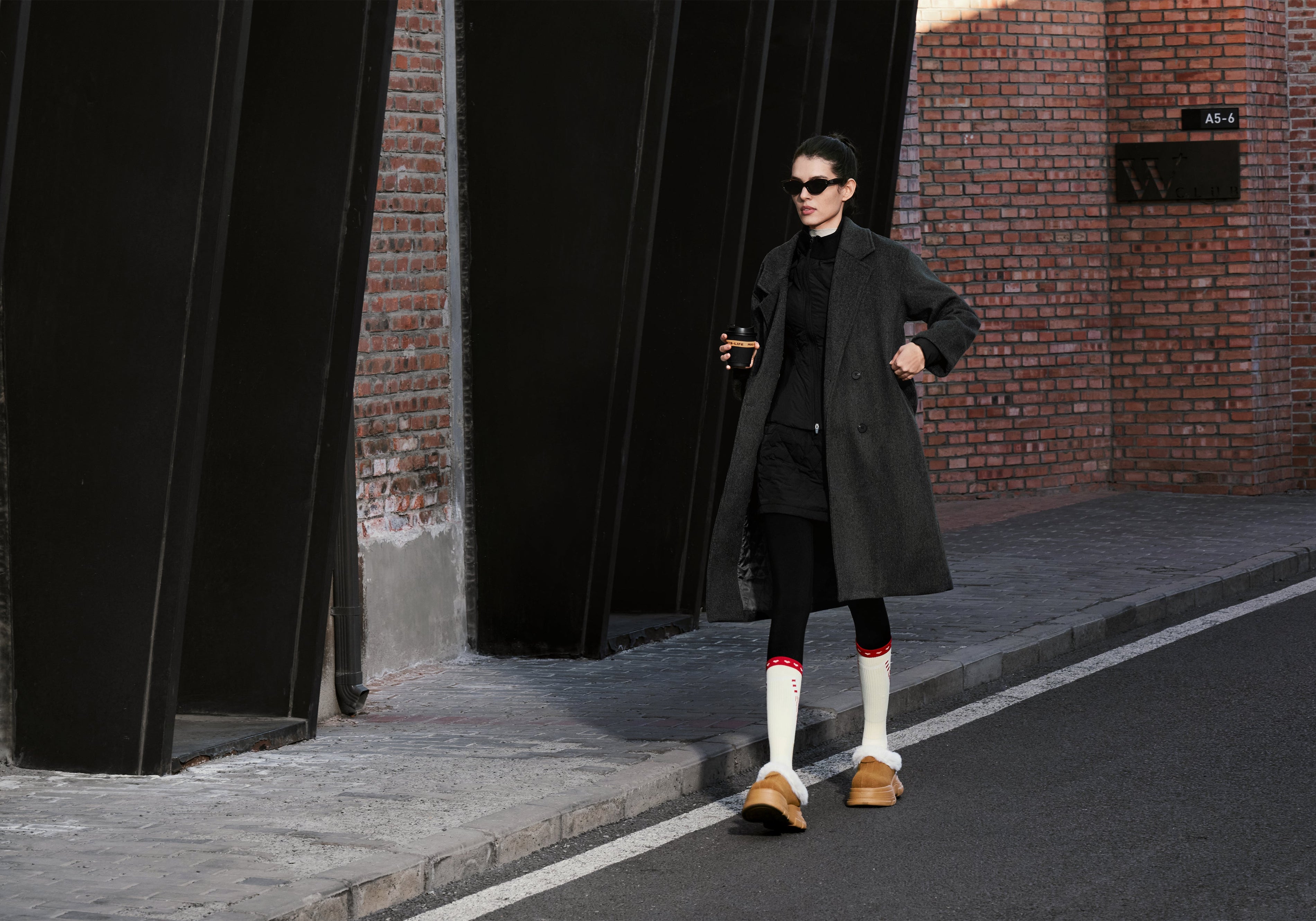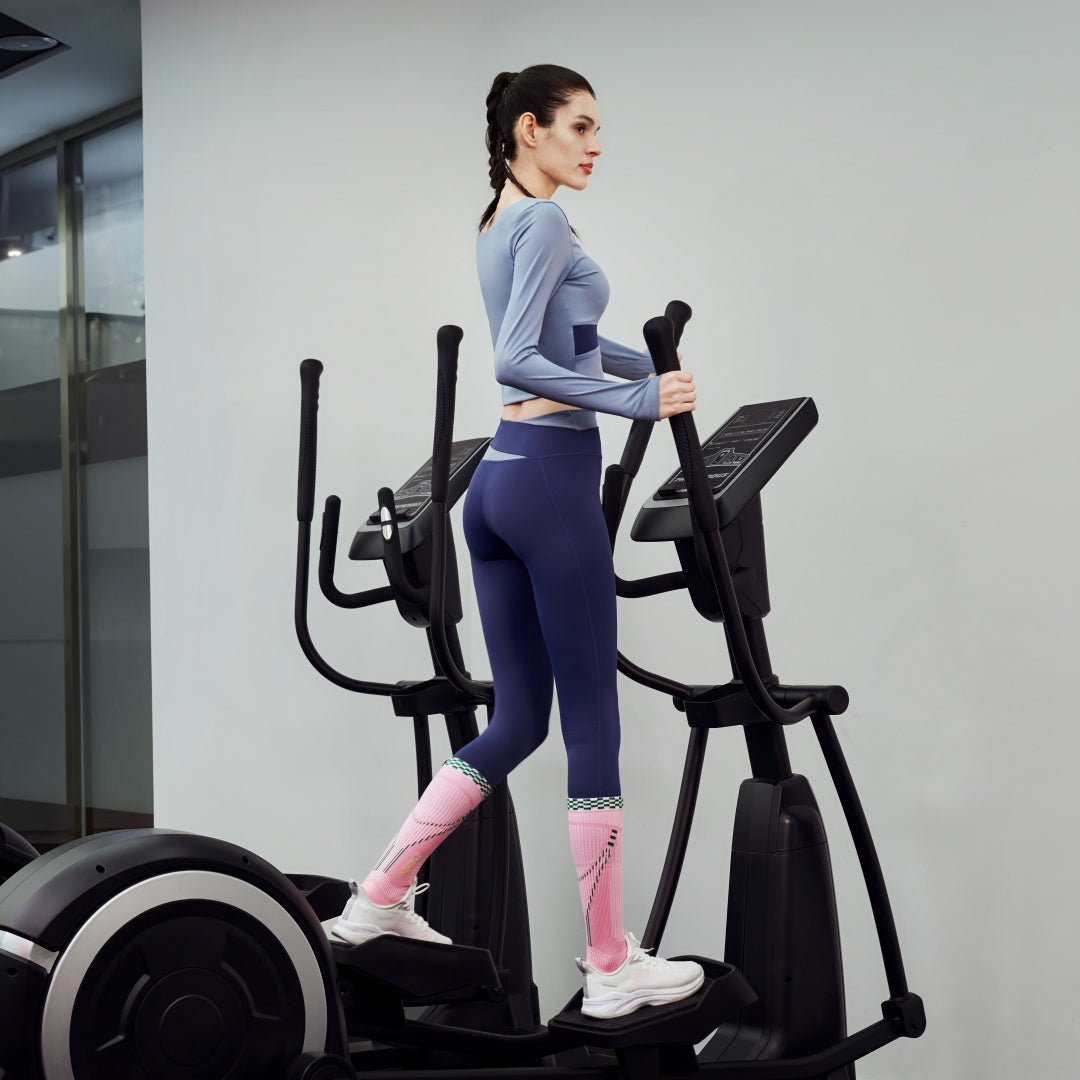| Section | Title |
|---|---|
| Introduction | Why Should You Wear Compression Socks on a Flight? |
| The Role of Compression Socks | What Are Compression Socks? |
| How Do Compression Socks Work? | |
| How Compression Socks Improve Blood Circulation | |
| Compression Socks and Deep Vein Thrombosis (DVT) Prevention | |
| Health Risks of Long-Haul Flights | Why Are Long Flights Bad for Blood Circulation? |
| The Impact of Sitting for Long Periods on a Plane | |
| How Low Cabin Pressure Affects Venous Blood Flow | |
| Ways to Reduce the Risk of Blood Clots While Flying | |
| Who Should Wear Compression Socks on a Plane? | Who Is More Prone to Blood Circulation Issues? |
| Are Compression Socks Necessary for Pregnant Women? | |
| Why Seniors Should Consider Wearing Compression Socks | |
| The Importance of Compression Socks for People with Varicose Veins or Other Vascular Conditions | |
| How Compression Socks Benefit Athletes During Flights | |
| How to Choose the Right Compression Socks for Flying | Understanding Different Compression Levels |
| Graduated vs. Uniform Compression Socks | |
| Finding the Right Size and Fit | |
| Materials: Breathability and Comfort for Long Flights | |
| Open-Toe vs. Closed-Toe Compression Socks | |
| How to Wear Compression Socks Correctly | When to Put on Compression Socks Before a Flight |
| How Long Should You Keep Compression Socks On? | |
| Signs That Your Compression Socks Are Too Tight or Too Loose | |
| Common Mistakes to Avoid When Wearing Compression Socks | |
| Additional Tips for Healthy Circulation on a Flight | The Best Exercises to Do While Seated on a Plane |
| The Role of Hydration in Preventing Blood Clots | |
| Choosing the Right Seat to Promote Leg Comfort | |
| The Importance of Walking Around During a Flight | |
| FAQs | Should Everyone Wear Compression Socks When Flying? |
| Can Compression Socks Prevent Swollen Feet on a Plane? | |
| What Happens If You Wear Compression Socks for Too Long? | |
| Are Compression Socks Safe for People with Diabetes? | |
| Can Compression Socks Be Worn with Sandals or Flip-Flops? | |
| Do Compression Socks Work for Short Flights? | |
| Conclusion | Final Thoughts on Wearing Compression Socks for Air Travel |
Introduction
Sitting in a cramped airplane seat for hours can cause discomfort, swelling, and even serious health issues like deep vein thrombosis (DVT). Wearing compression socks on a flight is one of the simplest ways to support blood circulation and prevent leg swelling. But do you really need them? And if so, how do you choose the right pair for your needs? Let’s explore everything you need to know about wearing compression socks while flying.
What Are Compression Socks?
Compression socks are specially designed stockings that apply gentle pressure to the legs, helping to improve blood circulation. They are widely used for medical purposes, particularly for preventing varicose veins, reducing swelling, and minimizing the risk of blood clots.
How Do Compression Socks Work?
Compression socks work by applying graduated pressure to the lower legs, promoting better blood flow back to the heart. They help prevent blood from pooling in the veins, reducing the chances of swelling and discomfort during long periods of inactivity, such as sitting on a plane.
Compression Socks and Deep Vein Thrombosis (DVT) Prevention
One of the biggest risks of long-haul flights is deep vein thrombosis (DVT), a condition where blood clots form in deep veins, often in the legs. Compression socks can significantly lower this risk by maintaining steady circulation and preventing blood from stagnating.

Why Are Long Flights Bad for Blood Circulation?
Spending hours sitting in an airplane seat can have several negative effects on blood circulation:
- Reduced Mobility: Prolonged sitting restricts movement, leading to sluggish blood flow.
- Lower Cabin Pressure: The reduced air pressure inside an airplane can slow down circulation, increasing the risk of clot formation.
- Dehydration: Airplane cabins have low humidity, which can contribute to dehydration, thickening the blood and increasing clotting risks.
How to Reduce the Risk of Blood Clots While Flying
To maintain healthy circulation on a flight:
- Stand up and move around every 1–2 hours.
- Stretch and flex your legs while seated.
- Stay hydrated by drinking plenty of water.
- Avoid alcohol and caffeine, as they can contribute to dehydration.
- Wear compression socks to support proper blood flow.
Who Should Wear Compression Socks on a Plane?
Compression socks are beneficial for many travelers, but they are especially important for individuals at higher risk of circulatory issues. According to a study published in The Journal of the American Medical Association (JAMA), long-haul air travel (flights over 4 hours) increases the risk of developing deep vein thrombosis (DVT) and pulmonary embolism (PE) by nearly 26% in certain individuals【source: JAMA】.
A report by the American College of Chest Physicians (ACCP) states that wearing compression stockings with a pressure range of 15–30 mmHg can reduce the incidence of DVT by 39% in air travelers【source: ACCP】. Given these statistics, let’s explore the key groups who should consider wearing compression socks on a flight.
1. Travelers on Long-Haul Flights (4+ Hours)
The longer you sit without moving, the greater the risk of poor circulation and blood clot formation. A study in The Lancet found that sitting for more than 4 hours on a plane significantly slows blood flow in the legs, increasing clotting risk by twofold【source: The Lancet】. Compression socks help maintain circulation and reduce leg swelling.
2. Pregnant Women
During pregnancy, the body produces more blood and hormones that increase clotting tendencies. The risk of developing venous thromboembolism (VTE) is 5 times higher in pregnant women than in non-pregnant women, according to the Centers for Disease Control and Prevention (CDC)【source: CDC】.
Compression socks help by:
- Reducing swelling (edema) in the feet and ankles.
- Improving circulation to prevent varicose veins.
- Lowering the risk of developing blood clots during travel.
The Royal College of Obstetricians and Gynaecologists (RCOG) recommends that pregnant women traveling for over 4 hours wear compression socks【source: RCOG】.

3. Seniors (60+ Years Old)
Aging naturally weakens vein walls and slows circulation. Studies show that nearly 30% of DVT cases occur in individuals over 60【source: National Institutes of Health (NIH)】. Sitting for extended periods on a plane can exacerbate this risk.
For seniors, compression socks:
- Prevent leg discomfort and fatigue.
- Reduce swelling caused by fluid retention.
- Support weak veins and prevent varicose veins.
A study in The Journal of Vascular Surgery found that wearing compression stockings reduced post-flight leg swelling in seniors by 50%【source: JVS】.
4. People with Varicose Veins or Poor Circulation
Varicose veins and chronic venous insufficiency (CVI) affect over 40% of adults in the U.S. alone, according to the National Institute of Health【source: NIH】. Long flights can worsen these conditions, leading to pain, swelling, and increased risk of venous ulcers.
Compression socks help by:
- Preventing blood from pooling in the veins.
- Alleviating pain and heaviness in the legs.
- Reducing the risk of further vein damage.
The American Venous Forum recommends compression therapy for individuals with chronic venous conditions, especially when traveling【source: AVF】.
5. People with a History of Blood Clots or DVT
If you have a personal or family history of blood clots, your risk of recurrence is higher. The World Health Organization (WHO) states that 1 in 10 people with a history of DVT will experience another clot within 5 years【source: WHO】.
Compression socks:
- Reduce the likelihood of clot formation by keeping blood moving.
- Are often recommended by doctors as part of post-DVT care.
- Help prevent post-thrombotic syndrome (PTS), a complication that occurs in 40% of DVT patients【source: American Heart Association】.
If you’ve had a clot before, consult your doctor before flying, as you may also need blood-thinning medication.
6. Athletes and Active Individuals
Athletes rely on proper circulation for muscle recovery and performance. Studies in The American Journal of Sports Medicine show that wearing compression socks post-exercise can enhance oxygen delivery to muscles by 15% and reduce muscle soreness【source: AJSM】.
For athletes flying to competitions:
- Compression socks prevent blood pooling, keeping legs fresh.
- They help in post-flight recovery by reducing muscle fatigue.
- Many elite marathon runners and cyclists wear them during and after travel to avoid leg swelling.
7. People with Diabetes
Diabetes can cause peripheral neuropathy and circulatory issues, increasing the risk of blood pooling in the legs. The American Diabetes Association (ADA) reports that 1 in 3 diabetic patients suffer from poor circulation【source: ADA】.
For diabetics, compression socks:
- Help maintain healthy blood flow.
- Reduce the risk of foot ulcers and diabetic neuropathy complications.
- Should be worn under medical supervision to ensure proper fit and avoid overly tight compression.
8. Overweight or Obese Individuals
Obesity increases the risk of DVT by 2 to 3 times, according to the Obesity Research Journal【source: ORJ】. Excess weight puts extra pressure on veins, reducing circulation in the legs.
Compression socks assist by:
- Preventing fluid buildup in the lower extremities.
- Supporting veins under increased pressure.
- Reducing leg fatigue during extended sitting.
If you belong to any of the above categories, wearing compression socks while flying can significantly lower your risk of discomfort, swelling, and serious conditions like DVT. Even if you don’t have an existing medical condition, compression socks can improve circulation and make long-haul flights more comfortable.
Before purchasing, consult a healthcare provider to determine the right compression level (mmHg) for your needs.
How to Choose the Right Compression Socks for Flying
Not all compression socks are created equal. Here’s what to consider when selecting the right pair:
Understanding Different Compression Levels
Compression socks come in varying pressure levels, measured in millimeters of mercury (mmHg):
- Mild (8–15 mmHg): Suitable for minor swelling and comfort.
- Moderate (15–20 mmHg): Ideal for travel, mild varicose veins, and preventing swelling.
- Firm (20–30 mmHg): Recommended for individuals with more serious circulation issues or medical conditions.
Graduated vs. Uniform Compression Socks
Graduated compression socks apply more pressure at the ankle and gradually decrease as they go up the leg, making them the best option for flying.
Choosing the Right Fit and Material
Ensure your socks fit snugly but are not too tight. Look for breathable, moisture-wicking materials to keep your legs comfortable on long flights.
How to Wear Compression Socks Correctly
When to Put Them On
It’s best to wear your compression socks before boarding to maximize their effectiveness.
How Long Should You Wear Them?
You should keep them on for the duration of the flight and for a few hours afterward to ensure optimal circulation.
Signs That Your Compression Socks Are Too Tight
If you experience numbness, tingling, or extreme discomfort, your socks may be too tight. Choose a lower compression level if necessary.
FAQs
Should everyone wear compression socks when flying?
Not necessarily, but they are highly recommended for long-haul flights, especially for those at risk of circulation issues.
Can compression socks prevent swollen feet on a plane?
Yes, they help prevent fluid buildup and reduce swelling.
What happens if you wear compression socks for too long?
Wearing them too long can cause discomfort, so remove them if you experience pain or irritation.
Are compression socks safe for people with diabetes?
Yes, but it’s important to consult a doctor for the right compression level.
Conclusion
Wearing compression socks on a flight is a simple yet effective way to improve circulation, reduce swelling, and prevent serious health risks like DVT. Whether you’re a frequent traveler, pregnant, or prone to poor circulation, compression socks can make your flight more comfortable and healthier.





